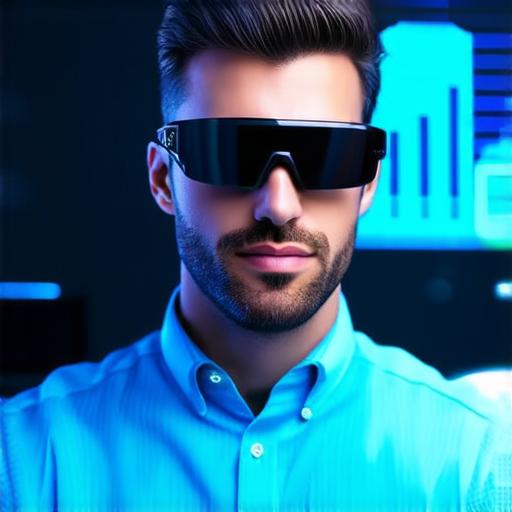Introduction
Augmented reality (AR) is a technology that allows users to interact with digital objects in their physical environment. It’s been around for a while, but it’s only in recent years that AR has become mainstream and started to have a significant impact on various industries.
The Rise of Augmented Reality
AR technology first became popular in gaming, where it was used to create immersive and interactive experiences for players. But soon, other industries started to take notice of AR’s potential. For example, the real estate industry started using AR to give virtual tours to potential buyers.
AR has also found its place in the retail industry. Retailers are now using AR technology to create interactive product displays that allow customers to try on clothes and makeup virtually. This is especially useful for businesses that sell products that are difficult to visualize without trying them on.
The Benefits of Augmented Reality
One of the main benefits of AR technology is its ability to enhance user experience. By overlaying digital objects onto the real world, AR can create a more immersive and interactive experience for users.
AR technology can also increase engagement and improve customer satisfaction. For example, the use of AR-enabled product displays has been shown to increase sales and reduce the number of returns. Customers are more likely to make a purchase when they can try on products virtually, which gives them more confidence in their choice.
How Augmented Reality is Changing the Business Landscape
AR technology is changing the way businesses operate, from design to marketing to sales. Here are some examples of how AR is being used in different industries:

- Design and Architecture
- Marketing
- Education
AR technology has revolutionized the way architects and designers create and visualize their work. By using AR, they can overlay digital objects onto the real world, which allows them to see how their designs will look in context.
AR technology is also being used in marketing to create interactive product displays and immersive advertising campaigns. For example, Coca-Cola’s “Share a Coke” campaign used AR technology to create personalized Coke bottles with people’s names on them. This campaign was a huge success and generated a lot of buzz for the brand.
AR technology is also being used in education to create more interactive and engaging learning experiences. For example, AR apps can be used to teach anatomy by overlaying digital objects onto a real body. This allows students to see how different parts of the body work together, which makes it easier for them to understand complex concepts.
Case Studies: How Augmented Reality is Being Used in Business
1. IKEA’s AR App
IKEA’s AR app is a great example of how AR technology can be used in the retail industry. The app allows users to see how different pieces of furniture would look in their home before they buy them. This has been shown to increase sales and reduce the number of returns, which makes it easier for customers to make informed purchasing decisions.
2. Sephora’s AR Product Display
Sephora’s AR product display is another example of how AR technology can be used in retail. The display allows customers to see how different makeup products would look on their skin before they buy them. This has been shown to increase sales and reduce the number of returns, which makes it easier for customers to find products that work for them.
3. Ford’s AR Assembly Line
Ford’s AR assembly line is an example of how AR technology can be used in manufacturing.